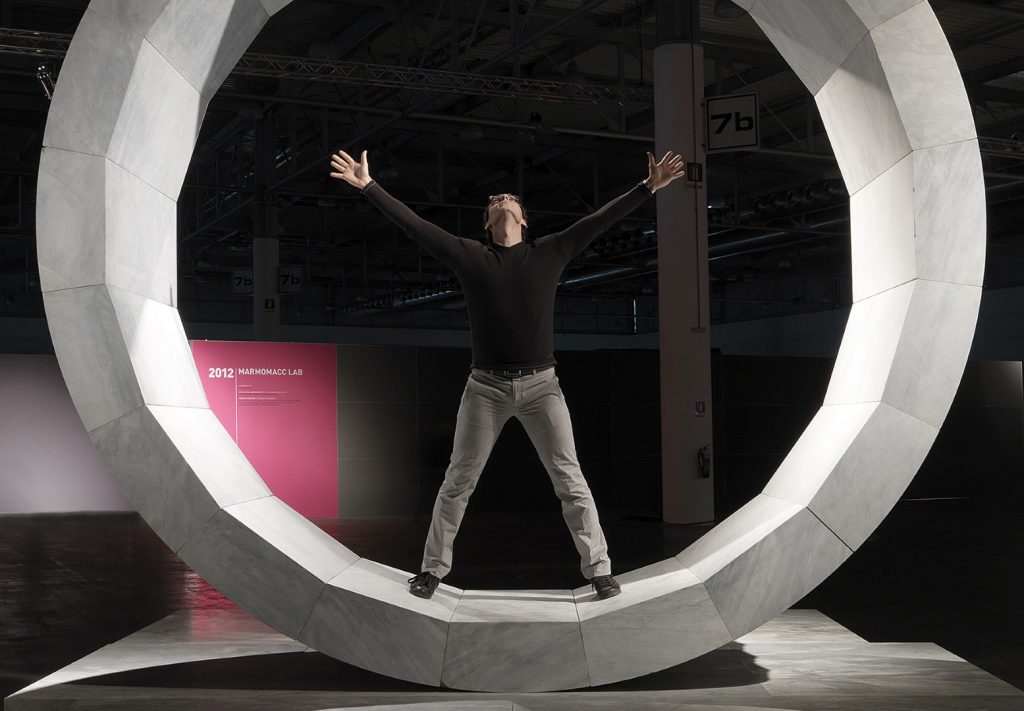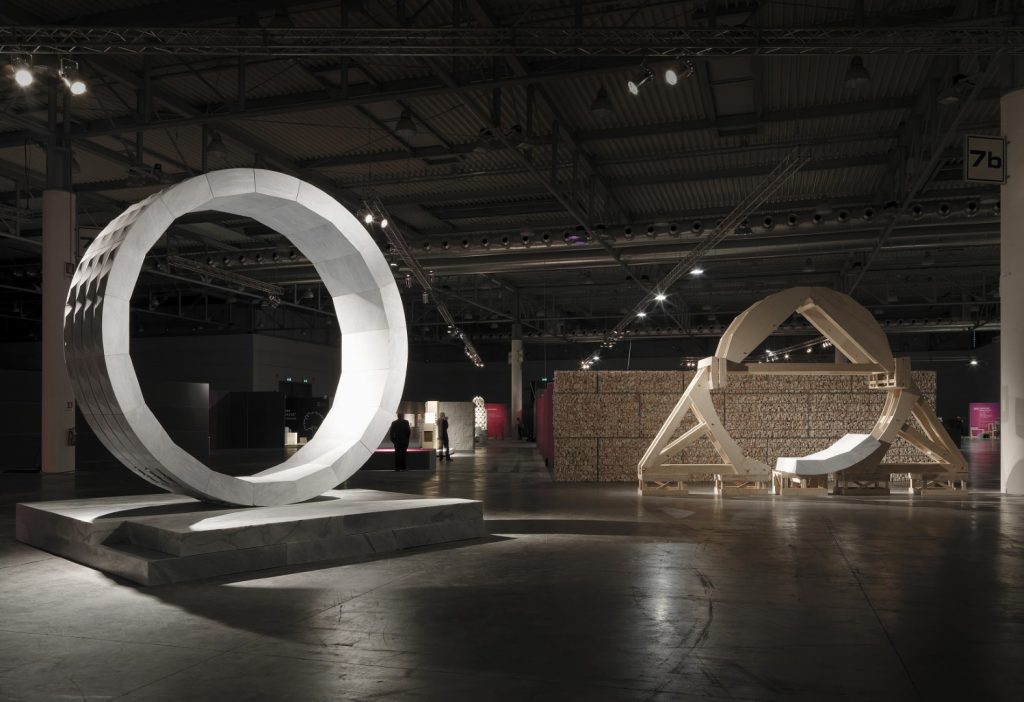Italian designer Raffaello Galiotto continues his industrial design practice and artistic activities in the design studio he founded in 1993, after studying painting at the Accademia di Belle Arti in Venice. The designer has developed unique designs and exhibitions on an international scale by applying the experiences he gained by getting to know materials and technologies, especially when he was working in the furniture industry. Galiotto, who won many national and international awards by creating surprising and characteristic innovative products, especially in the stone industry, has carried out important activities in stone design by advancing his research on aspects of natural stone such as gravity, translucency, reflection and sustainability in recent years. Galiotto, who was a professor of design at the University of Ferrara from 2011 to 2019, continues to cooperate with some distinguished universities that organize conferences with the participation of international architects.
Stone Gate
Presented for the first time at the “100% Gravity” exhibition and designed by Raffaello Galiotto who showcasing innovative forms of marble in every collection with collaboration with Lithos Design Stone Gate is an avant-garde and state of the art architectural-engineering project that works with the physical laws of natural stone. In the balance between mass, weight and gravity, Stone Gate is a challenge underlying an articulated and complex design. Stone Gate, designed with a system of 20 modular stone blocks, each of which weighs 5 quintals, and which has a self-supporting structure with embedded steel cables, is a walkable, living creation that people can truly experience. In the design, which is produced with dark gray marble with fine white-gray veins, which is frequently preferred especially in artistic, architectural and urban design applications, a devoted engineering work has been done to ensure statics and safety.
The stone circle, 3.80 m high and 1.20 m deep, weighing a total of 27,300 kg, alludes to the Vitruvian Man, encouraging visitors to instinctively open their arms, as if to measure themselves against the magnificence of this object. Consistent with this world-renowned sketch by Leonardo, the design supports the mathematics that underlie any art form that seeks to reproduce the perfect beauty of nature, and the ideas that today underpin cutting-edge industrial technologies for modular manufacturing. This unexpected experiential dimension of the magnetic circle, which raises itself in the face of primitive man’s urge to measure himself and feel hopelessly small, brings the design to the level of contemporary art.


















